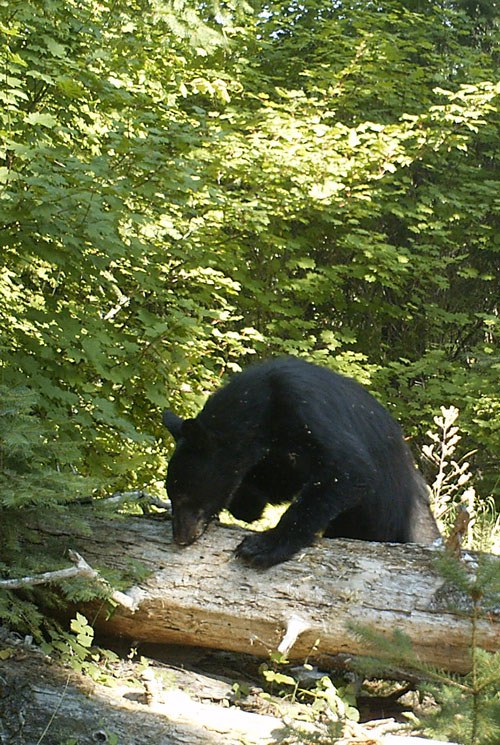“When a pine needle falls in the forest, the eagle sees it; the deer hears it, and the bear smells it.” – First Nations saying
Prior to Euro-American settlement, Oregon was home to two different species of bear--the Black Bear (Ursus americanus) and its infamous big brother, the Grizzly Bear. However, by the early 20th century the last remaining grizzlies in Oregon were either killed or retreated to more secluded habitats in other states, leaving Oregon with the black bear as its only species of the Ursidae family. It should be noted that the name black bear can sometimes be misleading, as various genetic and environmental circumstances can yield black bears that are actually brown, blonde, or even white. There have been a few instances where people hastily mistake brown-colored black bears for a grizzly, despite the stark difference in their size.
Recent data from the Oregon Department of Fish & Wildlife indicate that there are approximately 25,000-30,000 black bears living in Oregon today--primarily in the Coast, Cascade, and Blue Mountain Ranges (ODFW). The preferred habitat for black bears is relatively undisturbed forestland, where they can utilize their exceptional athletic prowess to climb trees, swim in streams, and run around to new territories foraging for food, while taking advantage of the shelter and shading amenities that forests provide.
If you have ever been out for a hike at the Metolius Preserve near Camp Sherman, you were walking in an area that is well suited for black bears. Since black bears roam large areas on their quest for mates and food, the Metolius Preserve is only a fraction of the territorial space these animals occupy and need to thrive. The Land Trust has documented black bear sightings over the years with wildlife cameras located at various Community Preserves.
With the ongoing encroachment of human activity into the natural habitat of black bears, interactions between man and bear are not uncommon. Considering that bears have an outstanding sense of smell, they are often drawn to the odors emanating from garbage bins, campgrounds, and other human infrastructure. If a black bear has continued success dumpster diving, it is more than likely to habituate itself to these conditions and become a potential nuisance or danger to humans. Land that is used for timber production can also lead to conflicts with black bears as they can damage tree saplings by clawing away the bark to access sugar laden sapwoods.
Black bear populations in Oregon and across North America are considered to be stable and they are not currently listed as threatened or endangered. Stricter hunting regulations and the promotion of nonlethal methods to deal with nuisance bears are key initiatives that help keep populations healthy. However, looking at data comparing the historical and current range of black bears, it is clear that the loss and fragmentation of their habitat is the most pressing issue facing the species today.
Other Wildlife Profiles:
- Weasels: Central Oregon's Tiniest Winter Warriors
- What are Those Blue-bellied Lizards?
- An Animal You Otter Know


